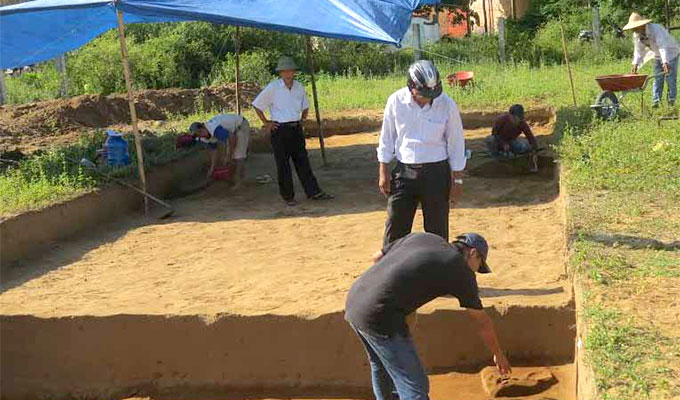Viet Nam Archaeology Institute has found five stone axes believed to come from the 3,000-year-old Sa Huynh Culture at a Khue Bac communal house garden in Da Nang.
 |
|
Excavating at Khue Bac Archaeological Site |
The communal house lies at the foot of the Ngu Hanh Son Mountains (Marble Mountains), 15km from the city centre.
The excavation, which began on May 16, provides more details on the appearance of the Sa Huynh Culture and the early Cham in the area. The excavation also proved the existence of people before the Sa Huynh, and the connection between the Sa Huynh and Cham.
An archeological team from Viet Nam Archaeology Institute has carried out a larger pit in the hopes of finding more items in this second excavation of the garden. Some figures on the coins also proved that Chinese traders did business in the region in the 17th and 18th centuries. The archaeologists found hundreds of coins, ceramic pieces and stone fragments at the first 100sq.m pit, dug in 2001.
Ho Tan Tuan, director of the city's Heritage Management Centre, said that the team unearthed the axes while digging a second pit in the garden.
Items found from in the two excavations prove two cultures – the Early Cham and the Sa Huynh – existed in the garden of the Khue Bac communal house. Archaeologist Pham Van Trieu said the stone axes, ceramics and stones would have come from the Early Cham in the second and third centuries.
The archaeological team will continue to search the garden, and announce their final results early next month.
Between 2012 and 2014, archaeologists from Ha Noi's University of Social Sciences and Humanities and Da Nang's Cham Sculpture Museum found foundations of Cham tower complexes in Qua Giang and Phong Le Village in Hoa Vang District.
The towers were built to honour the Champa King, who ruled the region between the fourth and 13th centuries.